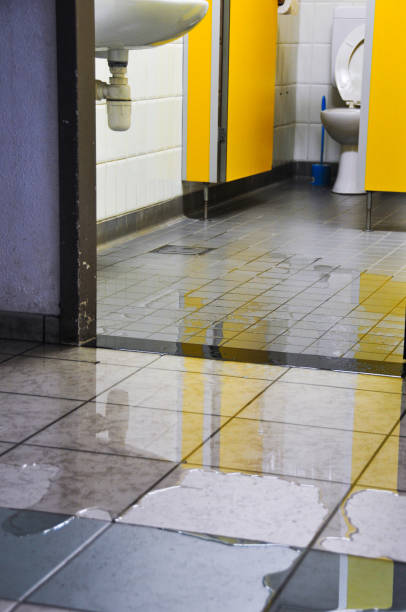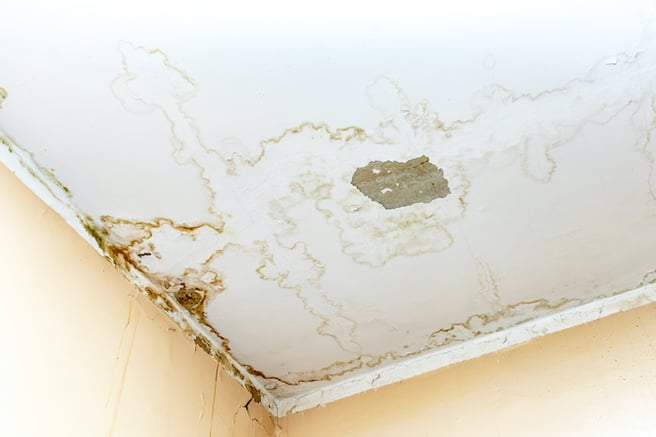The Causes of Water Harm in the Bathroom
The Causes of Water Harm in the Bathroom
Blog Article
Have you been trying to locate information concerning How to Repair and Prevent Bathroom Water Damage??

Water damage usually takes place in the washroom because of the water made use of day-to-day. In some cases, the damages could be a little mold and mildew from the shower. Various other times, it's large damages on your flooring. Whatever it is, it is always good to understand the reason and also stop it before it takes place.
This overview will certainly undergo a few of the typical sources of water damage in the shower room. We will certainly likewise analyze what you can do to prevent these causes from damaging your restroom. Let's dive in.
5 Common Causes of Water Damage in Restrooms
These are the usual factors you would certainly have water damage in your bathrooms and also how you can identify them:
Burst or Dripping Pipes
There are several pipes carrying water to various parts of your shower room. Some pipelines take water to the toilet, the sink, the faucets, the shower, as well as several other locations. They crisscross the little location of the washroom.
Occasionally, these pipelines could get rusty and burst. Various other times, human activity can create them to leakage. When this takes place, you'll discover water in the edges of your bathroom or on the wall surface.
To detect this, watch out for gurgling wall surfaces, mold and mildews, or mold. Call an expert emergency situation plumber to fix this when it takes place.
Fractures in your wall tilesv
Washroom wall surface tiles have actually been specifically designed for that objective. They protect the wall surface from moisture from individuals taking showers. Nevertheless, they are not indestructible.
Often, your bathroom wall tiles fracture and also allow some wetness to seep into the wall surface. This could possibly ruin the wall if you do not take any kind of action. If you see a fracture on your wall surface floor tiles, fix it right away. Don't wait up until it ruins your wall surface.
Overflowing commodes and sinks
As people, often we make errors that could cause some water damage in the bathroom. As an example, leaving your sink tap on can trigger overflowing as well as damage to various other parts of the restroom with dampness.
Likewise, a faulty bathroom can trigger overruning. For example, a busted toilet deal with or various other parts of the cistern. When this happens, it might damage the floor.
As soon as you observe an overflowing sink or commode, call a plumber to assist manage it promptly.
Roofing Leaks
Sometimes, the issue of water damage to the bathroom could not originate from the restroom. For example, a roof covering leak can trigger damages to the bathroom ceiling. You can find the damage done by checking out the water discolorations on the ceiling.
If you find water stains on your ceiling, check the roof covering to see if it's harmed. After that, call a professional to help solve the concern.
Excess Moisture
It's amazing to have that long shower and also dash water while you hem and haw and also act like you're carrying out, yet occasionally these acts might cause water damage to your bathroom.
Spraying water around can trigger water to go to edges and develop molds. See how you spread out excess wetness around, and when you do it, clean it up to stop damage.
Verdict
Water damage to your bathroom can be bothersome. Nonetheless, you can handle it if you prevent some of the reasons mentioned in this guide. Call an expert emergency plumbing if you see any type of serious damage.
How to Repair a Water-Damaged Wall in the Bathroom
All you need to know to repair bathroom wall water damage – from identifying the water source to finishing the repair professionally. If you don’t act quickly to resolve a water damage problem, you could find that it develops into a mold issue and/or cause structural damage to your home. Follow this guide to repair your bathroom before it's too late.
All you need to know to repair bathroom wall water damage
Water damage is a common household problem, and one that, if left unrepaired, can quickly lead to structural problems and health issues. The two most likely rooms where water damage may occur is the bathroom and the kitchen – where water is used often and there is high humidity.
What is water damage?
It is easy to think of water damage as caused by a flood or leaking tap or burst water pipe. However, when water damage is assessed, there are three main categories into which water falls (as classified by the American National Standards Institute). These categories are defined as:
Category 1 Water – ‘Clear Water’
This is sanitary water. There is usually no major threat to health by washing with this water, drinking it, or inhaling if it is streaming. Most water that enters your home will be category 1 water, while most water leaving your home will be either category 2 or 3 water. It may also come from melting snow, rainwater and water tanks.
Damage caused by this type of water can usually be repaired or restored, though this doesn’t mean that there are no potential health issues.
Category 2 Water – ‘Grey Water’
This is contaminated water – sometimes considerably so – and will cause illness if consumed or if it comes into contact with your skin. Water damage in this category is often caused by overflows from toilet bowls, and damage to washing machines and dishwashers. While damaged items might still be repaired or restored after damage by grey water, it is more difficult and more expensive to do so.
If the water damage in your home has been caused by grey water, it is advisable to have repairs made by professionals.
Over time, grey water will deteriorate and become black water.
Category 3 Water – ‘Black Water’
Category 3 water, also known as black water, is highly contaminated and a great risk to health. This may contain raw sewage, heavy metals, and other toxic substances. It will smell terrible.
If this is the water that has caused damage in your bathroom, do not touch it. Stop the water flowing if possible, seal the room and call the experts: it really isn’t worth the risk of ill health and disease that could be fatal. It is very unlikely that items can be repaired or restored if they have been damaged by black water.
https://www.porterscleaning.com/blog/how-to-repair-a-water-damaged-wall-in-the-bathroom/

How to Repair a Water-Damaged Wall in the Bathroom
All you need to know to repair bathroom wall water damage – from identifying the water source to finishing the repair professionally. If you don’t act quickly to resolve a water damage problem, you could find that it develops into a mold issue and/or cause structural damage to your home. Follow this guide to repair your bathroom before it's too late.
All you need to know to repair bathroom wall water damage
Water damage is a common household problem, and one that, if left unrepaired, can quickly lead to structural problems and health issues. The two most likely rooms where water damage may occur is the bathroom and the kitchen – where water is used often and there is high humidity.
What is water damage?
It is easy to think of water damage as caused by a flood or leaking tap or burst water pipe. However, when water damage is assessed, there are three main categories into which water falls (as classified by the American National Standards Institute). These categories are defined as:
Category 1 Water – ‘Clear Water’
This is sanitary water. There is usually no major threat to health by washing with this water, drinking it, or inhaling if it is streaming. Most water that enters your home will be category 1 water, while most water leaving your home will be either category 2 or 3 water. It may also come from melting snow, rainwater and water tanks.
Damage caused by this type of water can usually be repaired or restored, though this doesn’t mean that there are no potential health issues.
Category 2 Water – ‘Grey Water’
This is contaminated water – sometimes considerably so – and will cause illness if consumed or if it comes into contact with your skin. Water damage in this category is often caused by overflows from toilet bowls, and damage to washing machines and dishwashers. While damaged items might still be repaired or restored after damage by grey water, it is more difficult and more expensive to do so.
If the water damage in your home has been caused by grey water, it is advisable to have repairs made by professionals.
Over time, grey water will deteriorate and become black water.
Category 3 Water – ‘Black Water’
Category 3 water, also known as black water, is highly contaminated and a great risk to health. This may contain raw sewage, heavy metals, and other toxic substances. It will smell terrible.
If this is the water that has caused damage in your bathroom, do not touch it. Stop the water flowing if possible, seal the room and call the experts: it really isn’t worth the risk of ill health and disease that could be fatal. It is very unlikely that items can be repaired or restored if they have been damaged by black water.
https://www.porterscleaning.com/blog/how-to-repair-a-water-damaged-wall-in-the-bathroom/
Do you appreciate more info about How to Repair and Prevent Bathroom Water Damage?? Try to leave a remark further down. We will be pleased to hear your responses about this write-up. In hopes to see you back again in the future. Sharing is caring. You won't know, you will be doing someone a favor. I appreciate reading our article about How to Repair and Prevent Bathroom Water Damage?.
Trusted plumbing solutions at hand. Report this page